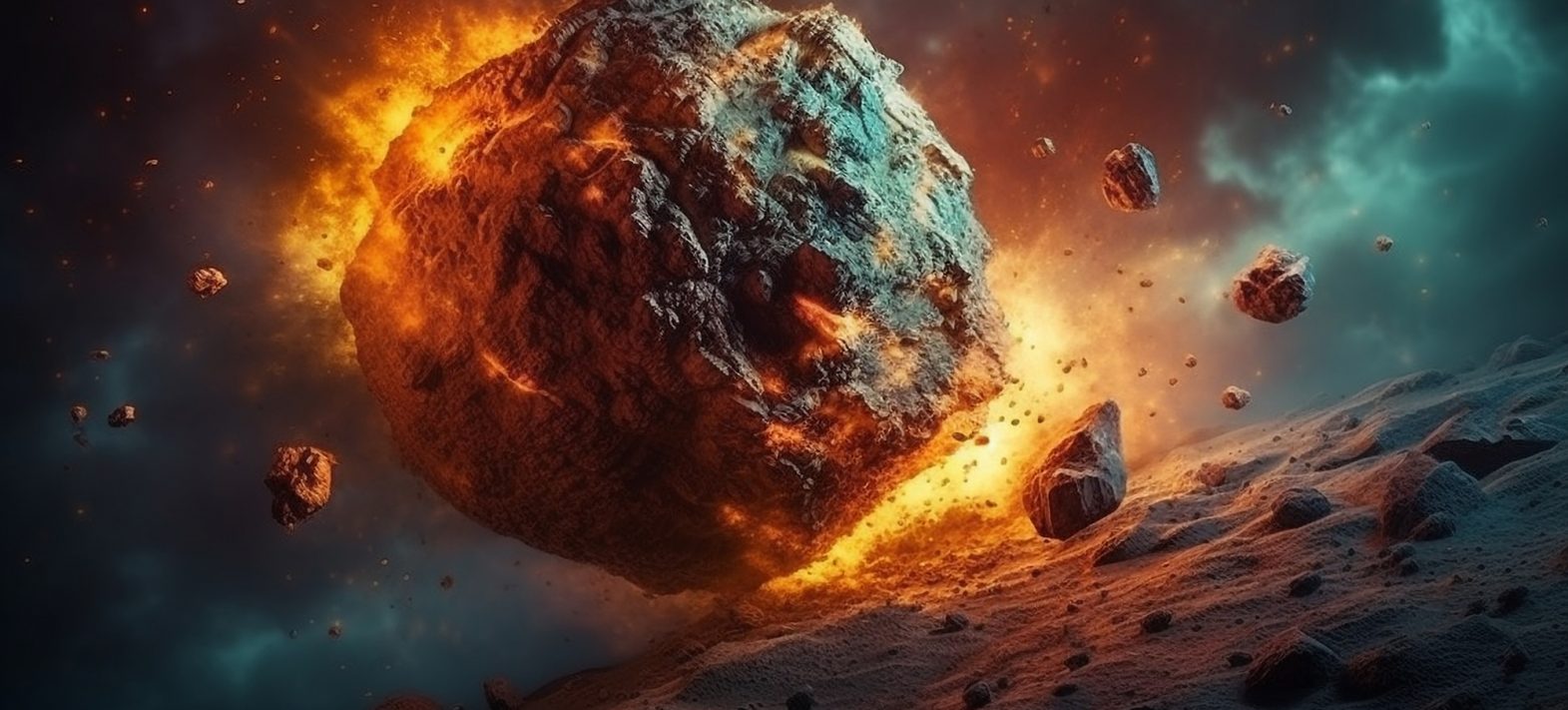The evolution of the Earth’s atmosphere studied using impact craters
An international team shows that rocks from the hydrothermal system formed following the impact of the Rochechouart asteroid around 200 million years ago contain traces of the atmosphere of that period in the Earth's history.

Artist's view of an asteroid crashing into Earth © Freepik
Publication date: 25/09/2023
Press, Research
Related teams :
Cosmochemistry, Astrophysics and Experimental Geophysics (CAGE)
Related themes : Origins, Earth and Planetary Interiors









